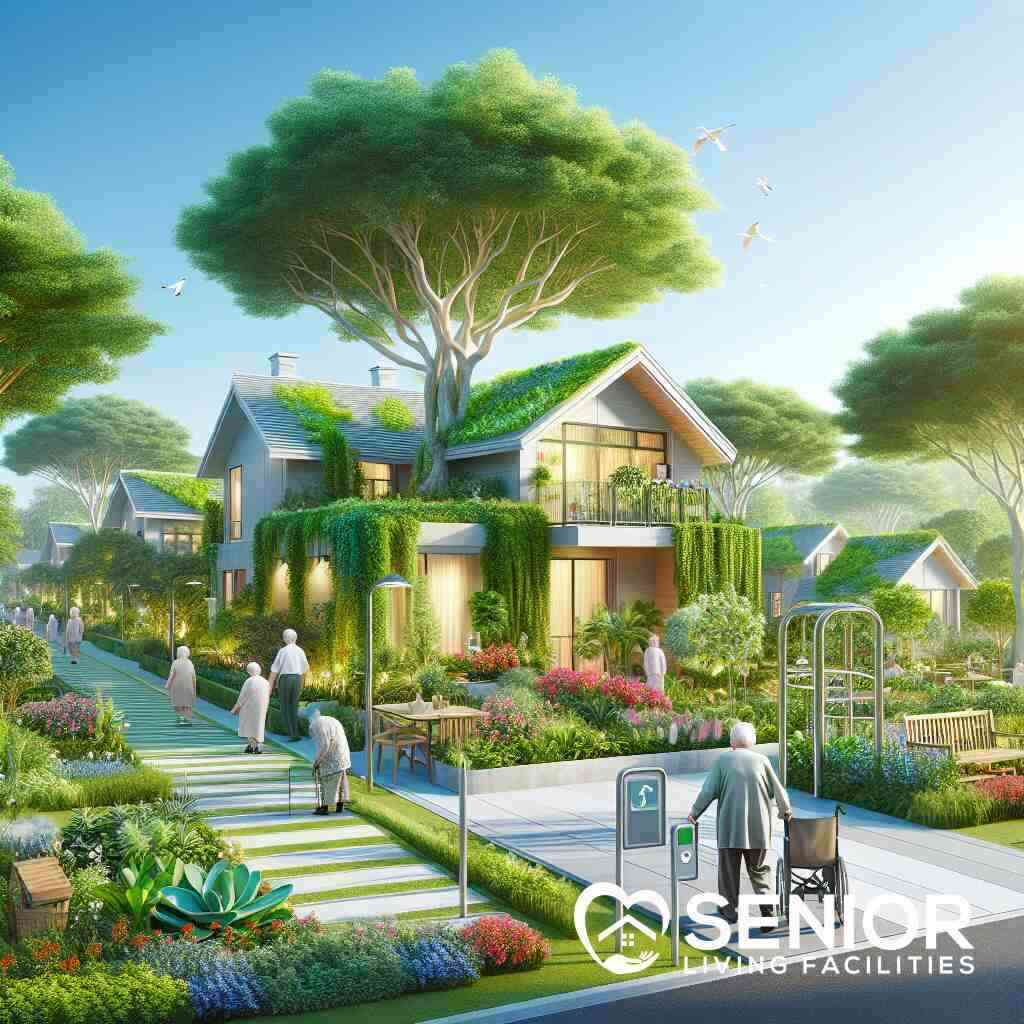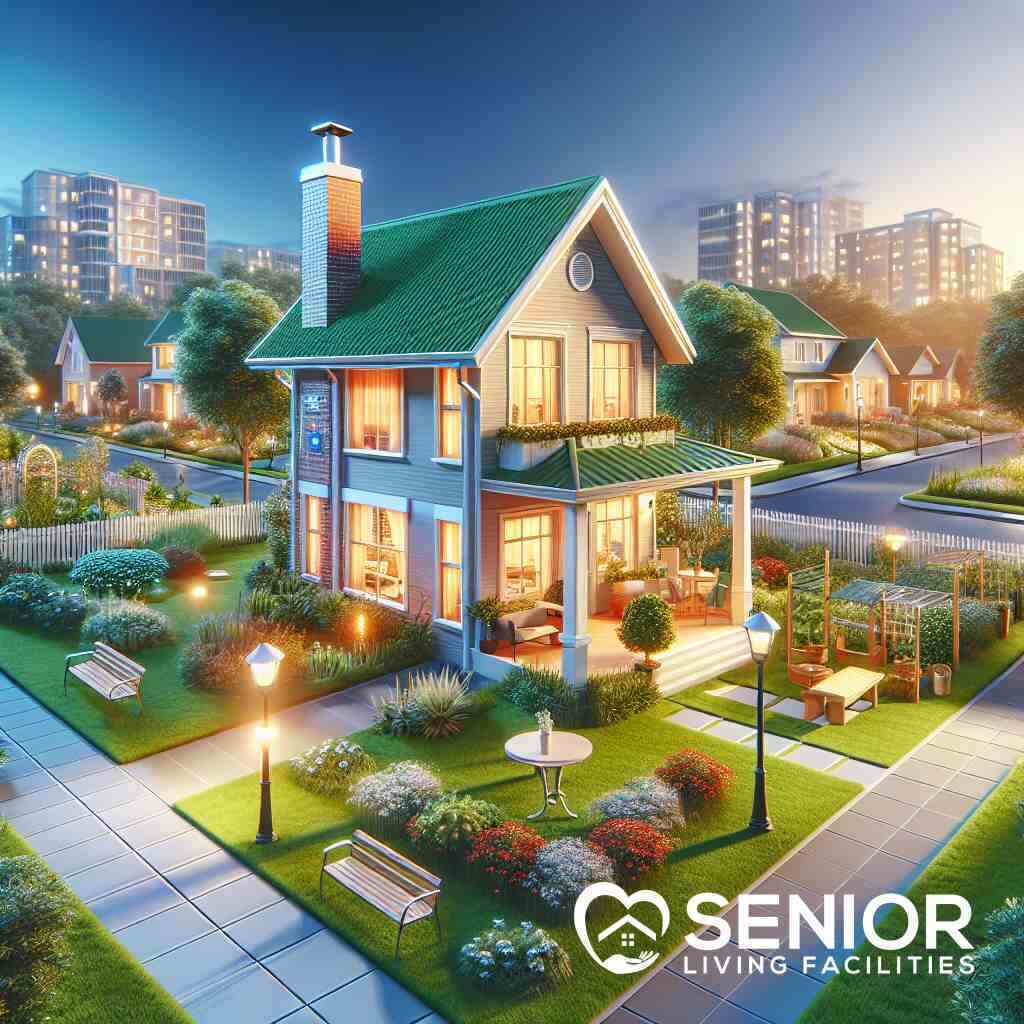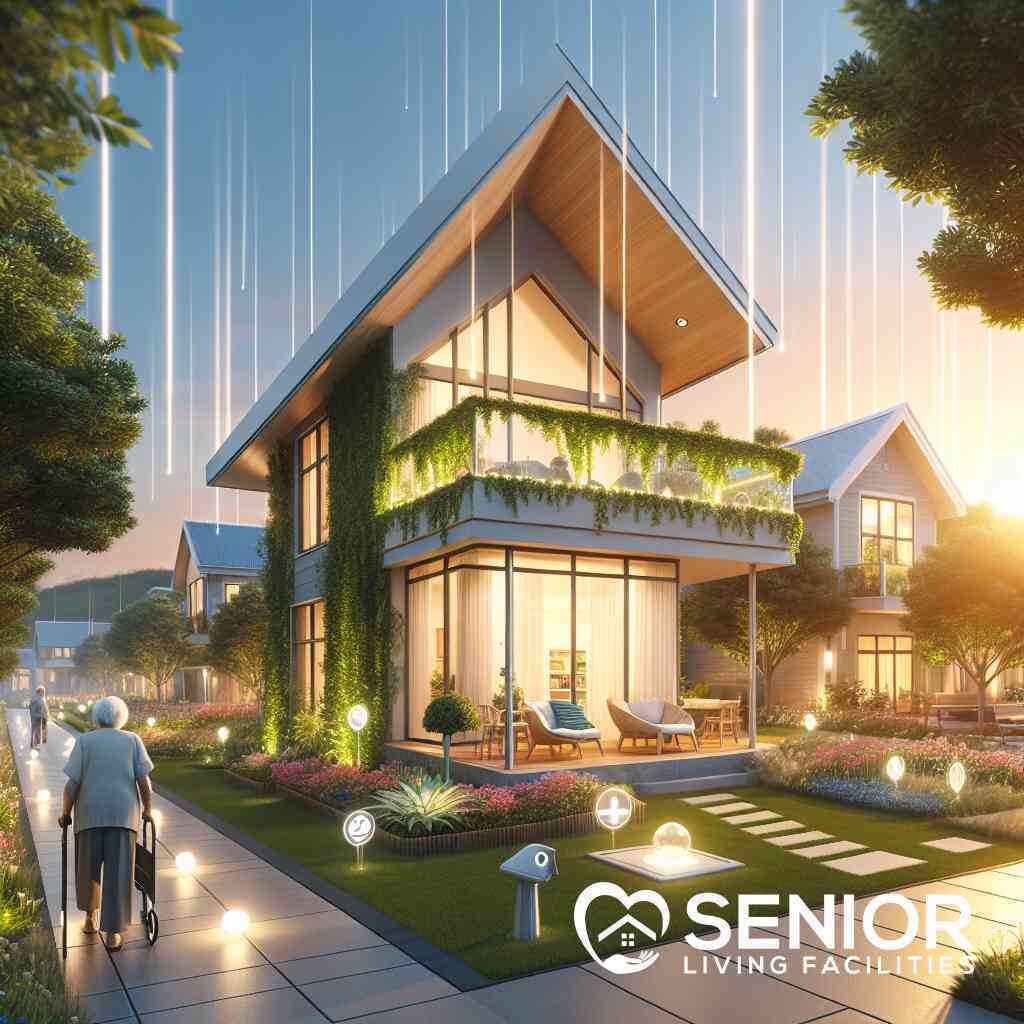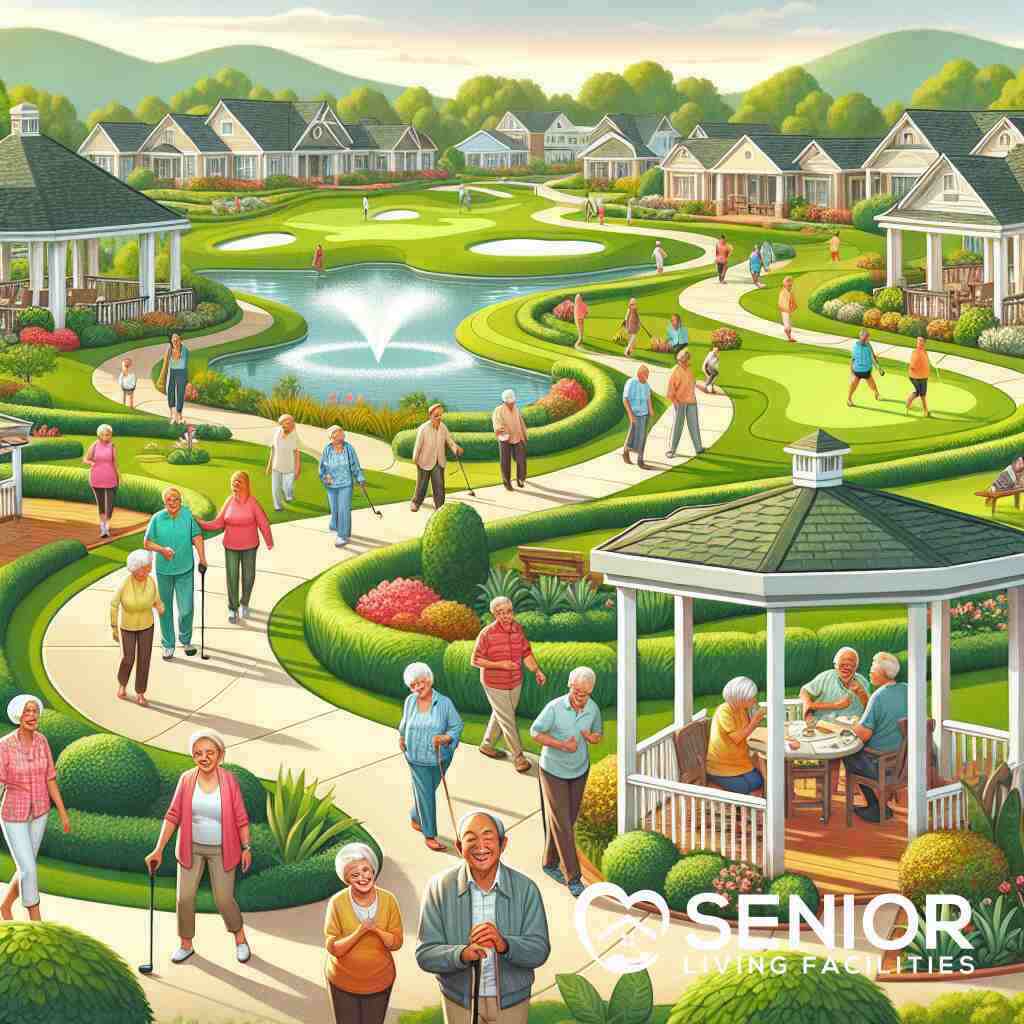
What Does Aging in Place Mean for Seniors in 2024?
August 26, 2024
Understanding Aging in Place in 2024
Definition and Importance of Aging in Place
Aging in place refers to the concept and practice of spending one’s senior years in the comfort of one’s own home rather than moving to specialized senior living facilities. This principle emphasizes maintaining independence, comfort, and familiarity, which can significantly impact one’s quality of life and well-being. As our population ages, the importance of aging in place has become more pronounced, with an increasing number of older adults and their families seeking ways to adapt living environments to meet changing needs. By aging in place, seniors can retain a sense of autonomy and connection to their community, which is vital for both mental and physical health.
Aging in Place Trends 2024
The year 2024 is poised to see a continuation and evolution of trends in aging in place, with technology playing a pivotal role. Smart home devices, telemedicine, and remote monitoring systems are becoming increasingly integrated into the homes of seniors, allowing for safer and more connected aging-in-place strategies. Communities are also adapting, offering more in-home support services and community-based programs aimed at keeping seniors engaged, active, and supported without the need to relocate. These advancements, combined with a growing industry of home modification services, are making it easier than ever for seniors to age comfortably and safely in their homes.
Benefits of Aging in Place for Seniors
The benefits of aging in place are numerous and significant. Firstly, it allows seniors to stay in a familiar and loved environment, reducing the stress and disorientation that can come with moving to a new place, especially for those suffering from cognitive impairments. Secondly, aging in place often leads to better health outcomes since individuals remain active, engaged, and involved in their community and social circles. Additionally, with the cost of assisted living facilities on the rise, aging in place can be a more cost-effective solution when properly planned. Lastly, the benefits of residing in place for the elderly also include personalized care, as the support systems can be tailored to the individual’s needs, ensuring they receive the right level of care without sacrificing their independence.
Key Components of Successful Aging in Place
Home Modifications for Seniors
The concept of aging in place is deeply intertwined with the idea of modifying one’s home to fit the needs of senior living. Home modifications for the elderly can range from minor adjustments like installing grab bars and improved lighting to more significant renovations such as the addition of a downstairs bedroom or a walk-in shower. These alterations not only enhance safety but greatly contribute to maintaining independence and a high quality of life. For seniors, a well-modified home can be the difference between an autonomous lifestyle and the need for assisted living facilities.
Home modifications also encompass the implementation of non-slip floors to prevent falls, widening doorways to accommodate mobility aids, and modifying kitchen cabinets and countertops for easy access. These changes are designed not just for functionality but to ensure that seniors can navigate their living spaces safely and comfortably. As we look into 2024, the focus on creating age-friendly homes is paramount, ensuring that aging in place remains not only viable but also a preferable option for many.
Aging in Place Technology
Technology for seniors residing at home has seen significant advancements, becoming a cornerstone of the aging-in-place movement. Innovations in technology for seniors are aimed at increasing safety, improving health monitoring, and enhancing communication with loved ones and caregivers. From simple devices like emergency response systems to more complex solutions like AI-powered health monitors and virtual assistant devices, technology is reshaping what it means to age in place.
Technological integrations in seniors’ homes now also include smart home devices that can control lighting, temperature, and security systems remotely, making daily tasks simpler and safer. Future trends are expected to focus on further personalization of technology to meet individual health and lifestyle needs, making aging in place an increasingly attractive proposition in 2024 and beyond.
Community Support for Seniors
Community support services play a critical role in the sustainability of aging. They encompass a wide range of programs, from meal delivery and transportation services to social clubs and wellness programs. These services are designed to mitigate the challenges of aging, providing seniors with the tools they need to remain independent while fostering a sense of belonging and community.
Community support services for seniors also extend to caregiver support, respite care, and health care services, ensuring that seniors receive the holistic care they require. The tight-knit collaboration between community services and seniors living at home reinforces the safety net that supports aging in place, guaranteeing that seniors have access to necessary resources without sacrificing their autonomy or quality of life.
In-Home Care Services
In-home care services are an indispensable component of the aging-in-place model, offering personalized care that ranges from basic household tasks to skilled nursing care. These services allow seniors to receive the care they need in the comfort of their homes, tailored to their specific needs and schedules. With an emphasis on maintaining the highest possible level of independence, in-home care services adapt to the evolving needs of seniors, ensuring that their home environment remains safe, comfortable, and conducive to their well-being.
In-home care professionals can provide a wide array of services, including medication management, mobility assistance, personal care, and even company and emotional support. As the demand for aging-in-place solutions grows, the in-home care industry is set to expand, offering more specialized and flexible services to meet the diverse needs of the aging population in 2024.
Planning for Aging in Place
Aging in Place Planning
Planning for aging in place necessitates a proactive approach to ensure that seniors can live safely, comfortably, and independently in their homes for as long as possible. This involves assessing the current living environment, anticipating future needs, and making necessary adjustments or renovations. A crucial part of this planning process is understanding the natural changes that come with aging, including mobility issues, sensory impairments, and other health-related challenges. By addressing these factors early, seniors and their families can create a living space that not only accommodates their needs today but also adapts to their needs in the future. Identifying the right aging-in-place services is essential in this endeavor, ensuring that all aspects of daily life can be managed effectively.
Assessing Needs for Home Care Options for Seniors
A comprehensive assessment of a senior’s current and anticipated needs is a cornerstone of planning for aging in place. This assessment should cover medical needs, mobility requirements, and the ability to perform activities of daily life, such as cooking, bathing, and managing medications. Consulting with healthcare professionals, occupational therapists, and aging-in-place specialists can provide valuable insights into the types of modifications and home care services that may be necessary. Whether it’s integrating elder care technology, hiring in-home care professionals, or making the home more accessible, understanding the specific needs of the senior allows for a more targeted and effective aging-in-place plan.
Universal Design for Aging in Place
Universal design principles are increasingly being incorporated into homes to support aging in place, offering solutions that are accessible and functional for individuals of all ages and abilities. A home designed with universal design principles might include features such as no-step entryways, wide doorways, and hallways to accommodate walkers or wheelchairs, lever-style door handles, and lower kitchen countertops. These features not only enhance safety and accessibility but also ensure that the home can adapt to the evolving needs of seniors as they age. Embracing universal design in aging-in-place planning fosters a more inclusive and flexible living environment that prioritizes independence and quality of life.
Financial Considerations for Aging in Place
Aging in place often presents various financial considerations that need to be carefully evaluated. This includes the costs associated with home modifications, ongoing maintenance, in-home care services, and potential medical expenses. Planning should consider both immediate expenses and long-term financial sustainability. Exploring funding options such as affordable senior living options, government programs, insurance policies, and reverse mortgages can provide financial support for aging in place. It’s also important to consider the cost-benefit analysis of investing in aging in place versus the expenses associated with assisted living or nursing homes, keeping in mind the value of comfort, independence, and familiarity that comes with remaining in one’s home.
Senior Living Facilities and Aging in Place

Choosing Between Senior Living Facilities and Aging in Place
Deciding whether to opt for aging in place or transition to a senior living facility is a pivotal choice many seniors and their families face. This decision involves evaluating the senior’s current and future health needs, social preferences, and financial situation. Aging in place allows seniors to remain in their homes, surrounded by familiar settings and memories, which can significantly benefit their emotional and mental well-being. On the other hand, senior living facilities provide a spectrum of care levels, from independent living to skilled nursing, along with social opportunities and amenities designed to enhance the quality of life. The choice depends on individual needs for care, social interaction, and the kind of assistance required in daily activities. Understanding the available senior living options near me can help me make an informed decision that aligns with my personal preferences and care needs.
How Senior Living Facilities Support Aging in Place
Senior living facilities often extend services beyond their immediate premises to support aging in place. Many communities recognize the desire of seniors to remain at home for as long as possible and, as such, offer various home-based services. These can include home health care, meal delivery, and even home modification consultations. The goal is to bridge the gap between the comprehensive care available within senior living communities and the autonomy afforded by aging in place. By providing these services, senior living facilities ensure that seniors receive the necessary support to maintain their health and independence, even if they choose not to reside within the facility. This holistic approach fosters a continuum of care that can adapt to the changing needs of seniors as they age.
Services Offered by Senior Living Facilities to Aid Aging in Place
Senior living facilities have evolved to offer an array of services aimed at assisting seniors who prefer aging in place. These services are designed to provide the flexibility and support that aging in the community requires. Among these offerings are:
- In-Home Health Care: Many facilities have developed programs that offer healthcare services directly in seniors’ homes, ranging from routine check-ups to specialized medical treatments. This ensures that seniors receive professional health monitoring without leaving the comfort of their homes.
- Daily Living Assistance: For seniors facing difficulties with activities of daily life, facilities may provide personal care aides who assist with bathing, dressing, and other personal care tasks, enabling seniors to maintain their dignity and independence.
- Home Modification Consultation: Recognizing the critical role of a safe and accessible environment in aging in place, some senior living facilities offer consultation services for necessary home modifications. These can include safety adaptations in the home for seniors, making the home environment safer and more accessible.
- Social and Recreational Engagement: To combat isolation and foster a sense of community, certain facilities also organize social and recreational activities that seniors can participate in from their homes or by visiting the facility.
By providing these services, senior living facilities play a vital role in enabling and enriching the aging-in-place experience, ensuring seniors have access to the care and community engagement they need while retaining their independence at home.
Aging in Place Design and Adaptations
Aging in Place Design
Aging-in-place design focuses on making homes more accessible and safer for seniors, enabling them to live independently for as long as possible. This design philosophy incorporates elements that are adaptable, flexible, and easily usable, regardless of an individual’s mobility or health status. For example, open floor plans that reduce fall risks and kitchens with variable-height countertops cater to users in wheelchairs or those who prefer to sit while working. The thoughtful aging-in-place design also includes non-slip flooring materials in critical areas like the bathroom and kitchen to prevent falls, one of the leading causes of injury among seniors. By integrating these designs, homes can be welcoming spaces that support seniors’ independence while minimizing risks.
Aging in Place Adaptations
Aging-in-place adaptations are specific modifications made to an existing home to enhance safety, improve accessibility, and meet the changing needs of seniors as they age. These adaptations can be simple, such as adding grab bars in the bathroom, shower seats, and elevated toilet seats, or more comprehensive, like installing stairlifts or converting a bathtub into a walk-in shower. Lighting is another critical area, with adaptations often involving the addition of brighter, glare-free lights to improve visibility and reduce the risk of falls. Doorway widening to accommodate walkers or wheelchairs ensures that all areas of the home remain accessible. These targeted changes allow seniors to navigate their homes confidently and safely, maintaining their quality of life.
Elder Care Technology and Tools
In the realm of aging in place, elder care technology and tools stand out as pivotal components that enhance the safety and well-being of seniors living independently. Modern advancements such as wearable health monitors track vital signs and detect falls, immediately alerting caregivers or emergency services if necessary. Smart homes equipped with voice-activated systems offer convenience and control over lighting, temperature, and security with simple voice commands, fostering a sense of security and autonomy. Additionally, medication management devices remind seniors to take their prescriptions on time, reducing the risk of health complications due to missed doses. These technologies not only support physical health but also provide peace of mind for both seniors and their families. Integrating elder care technology into aging-in-place strategies represents a forward-thinking approach to senior care in 2024.
Safety and Accessibility in the Home
Enhancing safety and accessibility in the home is a cornerstone of enabling seniors to age in place successfully. This includes both minor and major modifications tailored to prevent accidents and facilitate mobility within the home’s environment. Critical safety measures might involve the removal of tripping hazards, such as loose rugs and clutter, and ensuring that hallways and staircases are well-lit and equipped with handrails. Accessibility improvements include installing ramps for entryways, creating a main floor living space to eliminate the need for stair climbing, and incorporating health care for elderly needs into home design, such as accommodating home health aides. For many families, these adjustments are essential investments in the long-term independence and well-being of their senior loved ones, making the home a safer place for aging in place.
Conclusion: Embracing Aging in Place in 2024
The Future of Aging in Place
The concept of aging in place continues to evolve, with 2024 marking a pivotal year where innovation, community support, and personalized care converge to redefine independent senior living. The future of aging in place is characterized by advancements in technology that make living at home safer and more comfortable for seniors. With the integration of smart home devices and elder care technology, seniors now have the tools to manage their health and safety with unprecedented ease. Additionally, the emphasis on universal design ensures that homes can adapt to the changing needs of their inhabitants, making aging in place a more accessible and appealing option for a broader range of seniors.
Furthermore, as societal awareness and support for aging in place grows, we see a surge in resources and services aimed at assisting seniors in navigating the complexities of aging independently. From comprehensive online platforms offering advice on living facilities for seniors in 2024 to communities rallying to provide local support programs, the future looks promising for those wishing to age in their own homes.
How to Begin Your Aging in Place Journey
Starting your journey toward aging in place requires a thoughtful approach that encompasses assessing needs, planning for the future, and leveraging available resources. Seniors and their families should begin by evaluating the current living environment and identifying potential modifications or upgrades that can enhance safety and accessibility. Discussions with healthcare providers and aging-in-place specialists can provide valuable insights into personalized care needs and the adaptations necessary to support independent living.
Equally important is exploring the technology options available for seniors, from health monitoring systems to communication tools that keep families connected. Researching and understanding the landscape of in-home care services and community resources plays a critical role in creating a solid foundation for aging in place. Financial planning, too, is an indispensable step, ensuring that the decision to age in place is sustainable and aligned with the senior’s future care requirements and lifestyle aspirations.
Senior Living Facilities as a Resource for Aging in Place
Senior Living Facilities stands as a central resource for seniors and families embarking on the aging-in-place journey. With an extensive database of senior living options, including senior apartments in 2024, our platform simplifies the search for home modifications, in-home care services, and community support tailored to the unique needs of aging individuals. Beyond listing services, Senior Living Facilities offers guidance and expert insights into planning, executing, and thriving in an aging-in-place setting. Whether you’re considering simple home adaptations or seeking comprehensive support services, our platform facilitates connections to the best resources and solutions available across all 50 states.
Embracing aging in place in 2024 means optimistically looking forward to a future where seniors maintain their independence, live with dignity, and enjoy a high quality of life in the comfort of their own homes. With the right planning, resources, and support, aging in place can be a rewarding and fulfilling experience for seniors and their families. Senior Living Facilities is here to guide you every step of the way.
Frequently Asked Questions
Question: What makes aging in place a preferred option for seniors in 2024, according to the blog post “What Does Aging in Place Mean for Seniors in 2024?”
Answer: The blog post “What Does Aging in Place Mean for Seniors in 2024?” highlights several key factors that make aging in place an increasingly preferred option. Foremost, technology advancements, such as smart home devices and elder care technology, are enhancing safety and convenience in the home. Additionally, the trend towards more personalized and accessible home modifications enables seniors to live comfortably and safely in their own homes. Aging in place also offers seniors the benefits of remaining in familiar surroundings, maintaining their independence, and having access to community support and in-home care services tailored to their needs. Senior Living Facilities recognizes the importance of these factors and strives to provide a wide range of resources and support to help seniors and their families make informed decisions about aging in place in 2024 and beyond.
Question: How do senior living facilities support the trend towards aging in place, particularly in providing in-home care services and home modifications?
Answer: Senior Living Facilities play a pivotal role in supporting the aging-in-place trend by offering an array of services that enable seniors to live independently and safely in their own homes. Our platform connects seniors and their families with reliable in-home care services that cater to a wide range of needs, from personal care to skilled nursing services. Additionally, we recognize the importance of home modifications for seniors looking to age in place comfortably. Through our comprehensive listings and partnerships, we guide families in finding the right professionals to make necessary home adaptations, such as installing grab bars, ramps, and other aging-in-place adaptations, ensuring homes are safe and accessible. By providing these resources, Senior Living Facilities empowers seniors to continue living in their beloved homes with confidence and dignity.
Question: What role does community support for seniors play in enabling aging in place, and how do Senior Living Facilities facilitate access to these resources?
Answer: Community support for seniors is critical in enabling successful aging in place, providing essential services such as meal delivery, transportation, social activities, and health care. These services not only aid in maintaining physical well-being but also ensure emotional and social needs are met, preventing isolation and promoting a sense of belonging. Senior Living Facilities facilitate access to these vital resources through our extensive network of community support services available across all 50 states. By leveraging our platform, seniors and their families can easily find and connect with local services and programs designed to support aging in place, fostering a supportive and engaged community environment for seniors.
Question: How can seniors and their families start planning for aging in place in 2024, and what resources do Senior Living Facilities offer to assist with this process?
Answer: Planning for aging in place is a multi-step process that requires careful consideration and preparation. Seniors and their families should start by assessing their current living situation, identifying potential challenges, and considering future health and mobility needs. Senior Living Facilities offers a wealth of resources to assist with this planning process, including comprehensive guides on aging-in-place solutions, home modifications, and the latest in elder care technology. Our platform also provides access to a broad spectrum of aging-in-place services and professionals who can help implement necessary changes to ensure homes are safe and conducive to independent living. By exploring the resources available through Senior Living Facilities, seniors and their families can make well-informed decisions, providing a smooth transition to aging in place in 2024 and beyond.
Question: How does Senior Living Facilities differentiate itself from other online platforms in terms of aging-in-place resources?
Answer: Senior Living Facilities sets itself apart by offering a uniquely comprehensive and user-friendly platform dedicated exclusively to senior living options and aging-in-place resources. Unlike other online platforms, we provide an extensive database of senior living facilities, in-home care services, home modification professionals, and community support services, all available across the 50 states. Our commitment to quality and personalized care ensures that each senior and their family receives tailored recommendations to match their specific needs. Additionally, our expert insights, detailed guides, and comparison tools empower users to make informed decisions with confidence. With a focus on both the physical and emotional aspects of aging, Senior Living Facilities is a trusted partner for seniors and their families navigating the complexities of aging in place.



